Do you own a fish aquarium for the first time, and you would like an easy-to-care fish that adds colors to your fish tank? Another fish that would be ideal for this case given their easy-care nature and beautiful body colors would be the Paradise Fish. Are paradise fish aggressive? However, it is significant to gain considerable insights about Paradise fish and the environment they will need before getting involved with them.
In this part of the article, we will cover info on Paradise fish species, how to take care of them, their diet, and temperament. No matter if you are a beginner or an expert in fish keeping, this post will assist you in caring for Paradise fish.
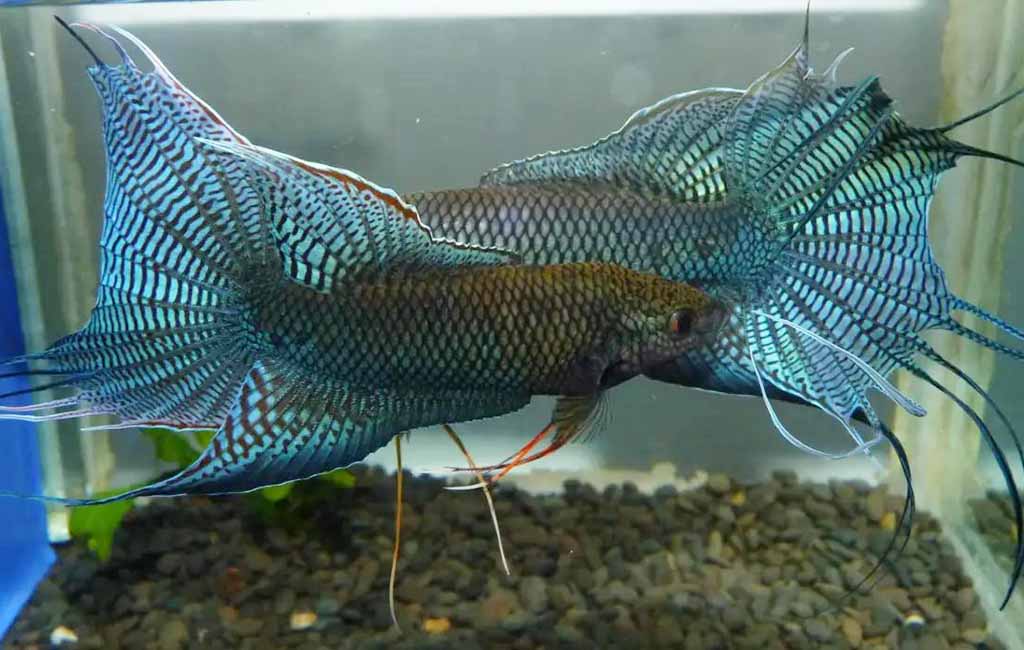
Are paradise fish aggressive
Paradise Fish Species Profile
Paradise fish or Macropodus opercularis is a small freshwater fish that is found in Thailand, Cambodia, Laos, and Vietnam. It is one of the most preferred aquarium fish because of its bright colorful body, unique fin, and non-aggressive attitude.
Physical Characteristics
- Size: Paradise fish’s maximum length is approximately 3 inches (7.5 centimeters).
- Shape: They are characterized by adopting a fusiform body shape and possess a slightly convex dorsal fin.
- Colors: The most popular body coloration is blue paradise fish, the whole body is blue color and red on its fin. Still, red, green, and yellow types are also in the market.
- Fins: Males are more colorful than female fish and have longer and more complex fins; these include dorsal fin, caudal fin, and anal fin. Often these fins have extensions that make the fins larger and also more flashy in look.
Behavior
- Peaceful: Paradise fish are mild-mannered fish and are good to be in tanks with other calm, temperate fishes. But they can develop aggression toward other males of the paradise fish.
- Active: They are working swimmers and like being in their aquarium.
- Surface Dwellers: Paradise fish are known to be surface-active fish because they can access both their food and oxygen from the water’s surface.
Habitat and Care
- Water Parameters: Paradise fish, are suitable for slightly acidic to slightly alkaline water temperatures of between 70-78 °F (21-26 °C). There is not very strict water hardness, and it has to be soft to moderately hard, pH 6.5-7.5.
- Aquarium Setup: General care includes that to house one paradise fish, the minimum tank size recommended is about 10 gallons(38L). Large aquariums with substratum and numerous shelters are perfect if you wish to start planting aquariums.
- Diet: Paradise fish are omnivores and accept many types of food. They can be fed flake food, live food for example blood worms, or mosquito larvae, and frozen food such as brine shrimp or daphnia.
Reproduction
- Breeding: Paradise fish are relatively easy to breed in a home aquarium. The male and female will perform a courtship ritual before spawning. The female will lay her eggs on plants or other surfaces, and the male will fertilize them.
- Fry Care: The fry is small and requires a diet of live food, such as infusoria or baby brine shrimp. They will grow quickly and reach maturity within a few months.
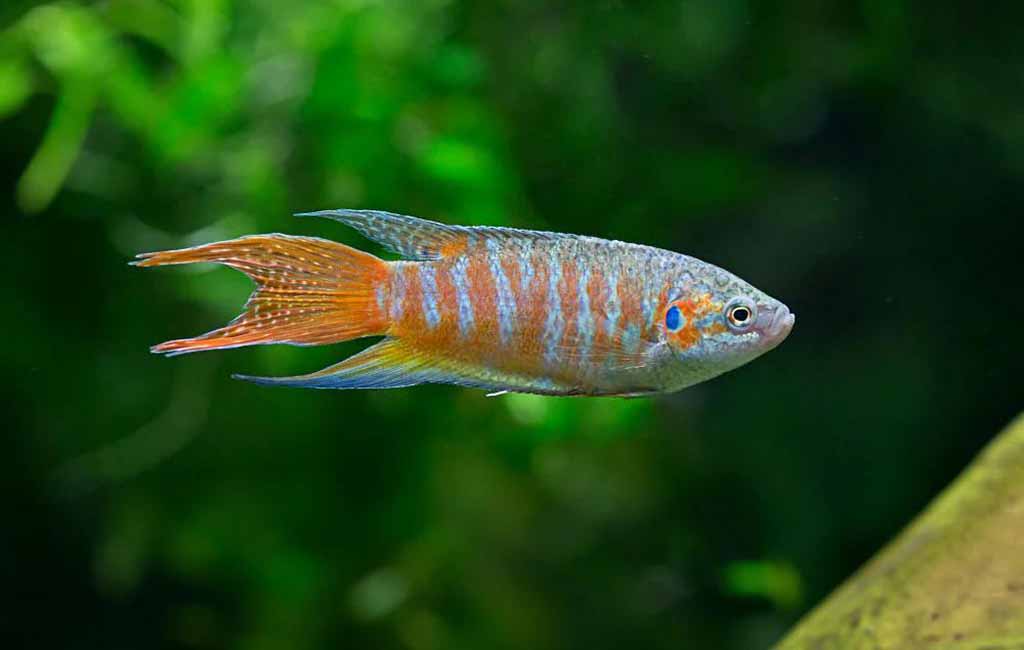
Paradise fish
Hardy Fish for an Aquarium
Paradise Fish Lifespan and Peculiarities
Paradise Fish or Macropodus opercularis is worth a lot of attention due to its beautiful appearance and quite high tolerance to changes in the conditions. It has been estimated that these brightly colored fish can survive between 4–5 years in an appropriate home environment offered by an aquarium. It’s one of the oldest types of ornamental fishes, originally found in East Asia and characterized by their blue, red, and green colored bodies.
1. Swimming Level
Paradise fish are water column-oriented, meaning that they prefer to stay in the middle to towards the top of the water. They are positively buoyant and active swimmers that move freely not only at the water column top but also sometimes sink a little to look for food or to rest all along the pelagic layer.
2. Water Flow
Paradise fish are best suited to water volume which is little to moderate. They are not suitable for force currents; thus, a mild filter or mini aerator is preferable. And too much water currents can discomfort them, making the aquarium less comfortable for the fish.
3. Tank Environment
- Tank Size: An adult paradise fish should be provided with at least 20 gallons of water capacity, and more when there are other fish in the tank.
- Temperature: They are found best at temperature ranges of 72–82 degrees F (22–28 degrees C). They come from the warm water and therefore; the paradise fish are fairly adaptable to water conditions but prefer warm water.
- Water Parameters: The ideal pH for one is in the range of 6.5 and 7.5. Paradise fish are not fussy about the hardness of the water, but they do best in slightly soft to moderately hard water.
- Aquascaping: Ensure you help your fishes have some algae, rocks, and numerous hiding places such as caves or driftwood. They like to have spaces and areas and beds, so enough tank decorations assist in calming them down as much as possible.

Caring for Paradise fish
Feeding Sheet for Paradise Fish
| Age | Feeding Frequency | Food Type | Supplements |
| Juvenile | 3-4 times/day | Flake, pellet | Live/frozen food (2-3 times/week) |
| Adolescent | 2-3 times/day | Flake, pellet | Live/frozen food (2-3 times/week) |
| Adult | 1-2 times/day | Flake, pellet | Live/frozen food (1-2 times/week) |
Growth Stages
- Fry (0-2 months)
- Size: At this stage, paradise fish are very small, typically around 25-0.5 inches(0.6-1.2 cm) long.
- Appearance: The fry are nearly transparent, with slight coloration starting to develop as they grow.
- Care: Fry needs gentle filtration and a stable water temperature of around 76-80°F (24-27°C). And you can feed them small, high-quality foods like infusoria or crushed flakes.
- Juvenile (2-6 months)
- Size: Juveniles grow rapidly, reaching 1-2 inches(2.5-5 cm).
- Appearance: They begin to show their distinctive colors, but the full brightness and patterns are not yet developed.
- Care: Juveniles need more protein-rich food like live or frozen brine shrimp, bloodworms, and finely crushed pellets. So, the water parameters should remain stable and slightly acidic to neutral (pH 6.5-7.5).
- Adolescent (6-12 months)
- Size: Paradise fish will reach around 2-3 inches(5-7 cm) during this stage.
- Appearance: Their full coloration, including the characteristic blue, red, and green hues, and starts becoming more pronounced, especially in males.
- Care: This is a stage where territorial behavior can start to appear, especially in males. Provide hiding and separation if you keep multiple fish.
4. Adult (12 months and older)
- Size: Adults can grow to 3-4 inches(7.5-10 cm).
- Appearance: Males develop more vibrant colors and longer fins than females. The full iridescent blue, red, and green patterns become clear.
- Behavior: Adults can be quite territorial, particularly males, and are known for their impressive flaring displays during breeding or when defending their space.
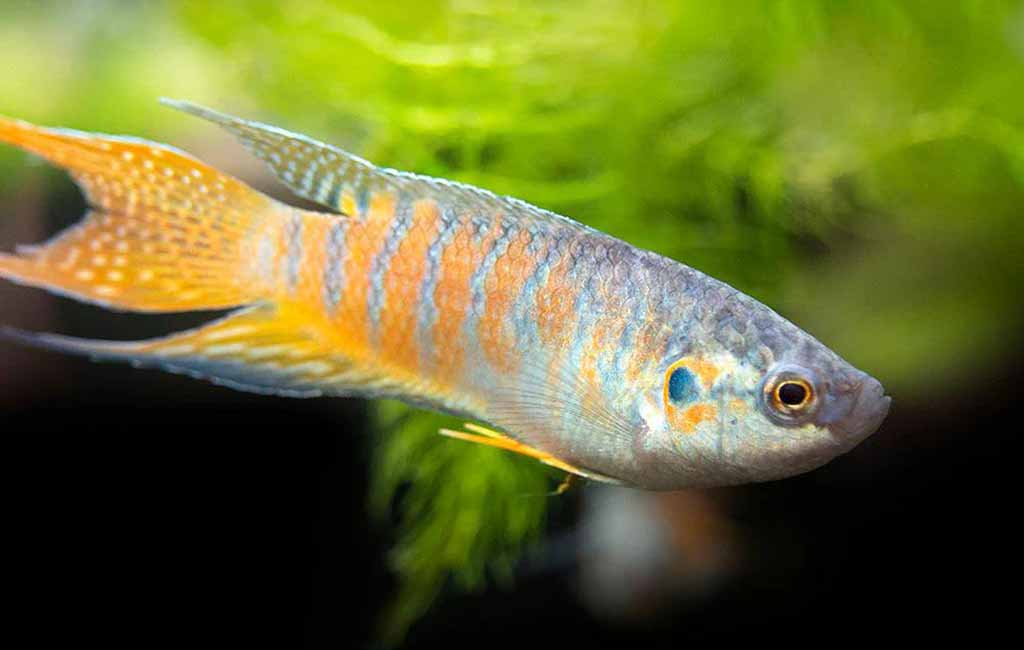
Rainbow paradise fish
How Aggressive Are Paradise Fish
Paradise fish are rather passive and even aggressive towards other fish they are compatible with other fish of the same temperaments. But they are aggressive towards other male paradise fish especially when the female is in a mated condition.
In its natural habitat, the male paradise fish can be kept individually in large tanks or groups with females, in which case the makers should provide many shelters to minimize the expression of aggression. And the female subjects are always more tolerant of fellow females.
How Many Paradise Fish Should Be Keep Together
Paradise fish are gentle aquarium animals and can be kept together in shoals. But there must be a balance kept when getting these pet fish so that there is less aggression, especially when there are many males and then there are few females to mate with.
It is advisable to mate one male paradise fish with two or three females. This will assist in minimizing conflicts that arise due to geographical rivalry and guarantee a smooth atmosphere.
When keeping just one male paradise fish then lots of hiding places will reduce the aggression amongst the fish. Further, other types of fish that are peaceful and can be kept in the company of paradise fish include guppies, neon tetras, or rasboras.
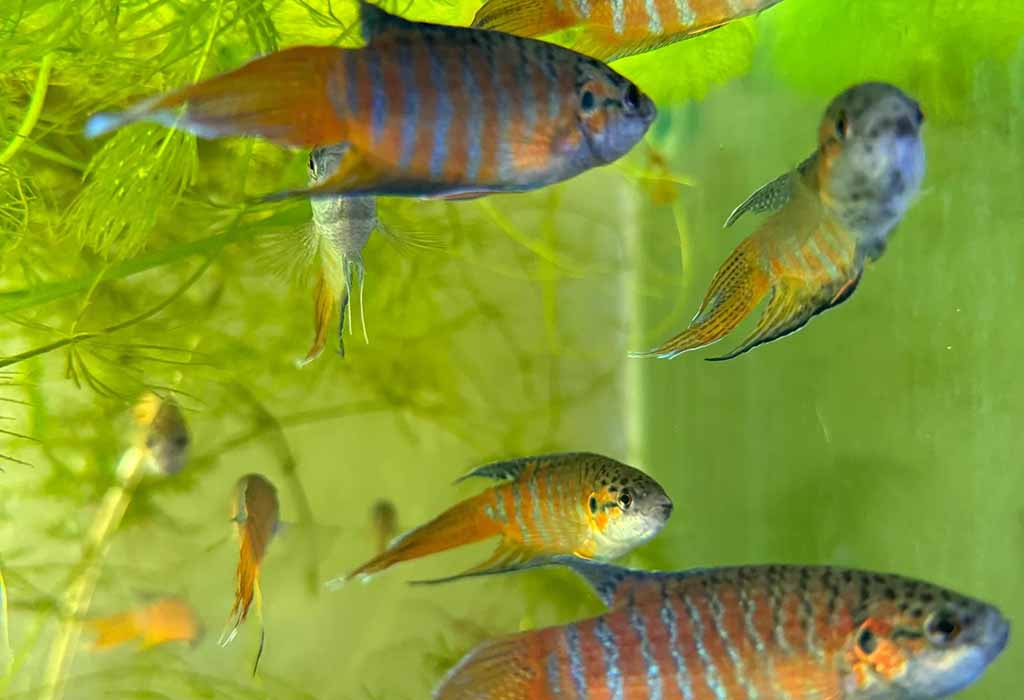
How many paradise fish
Concluding Thoughts
Paradise fish are elegant and easy to breed and can be put in an aquarium. It is characterized by their capability to produce bright colors and distinct fins and these are some of the most docile fish known among aqua enthusiasts. But it is important to care for them properly and measurably in; delivering proper water conditions, a balanced diet, and perfect tank conditions. If you strictly adhere to the suggestions given in this article, you can maintain and even breed paradise fish in your home aquarium long-lasting and safe.

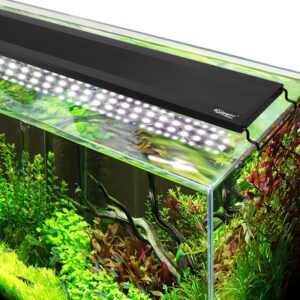
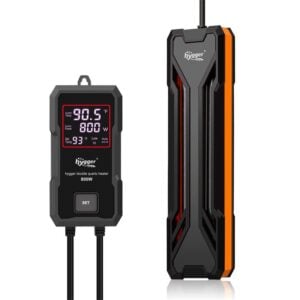
Leave a comment